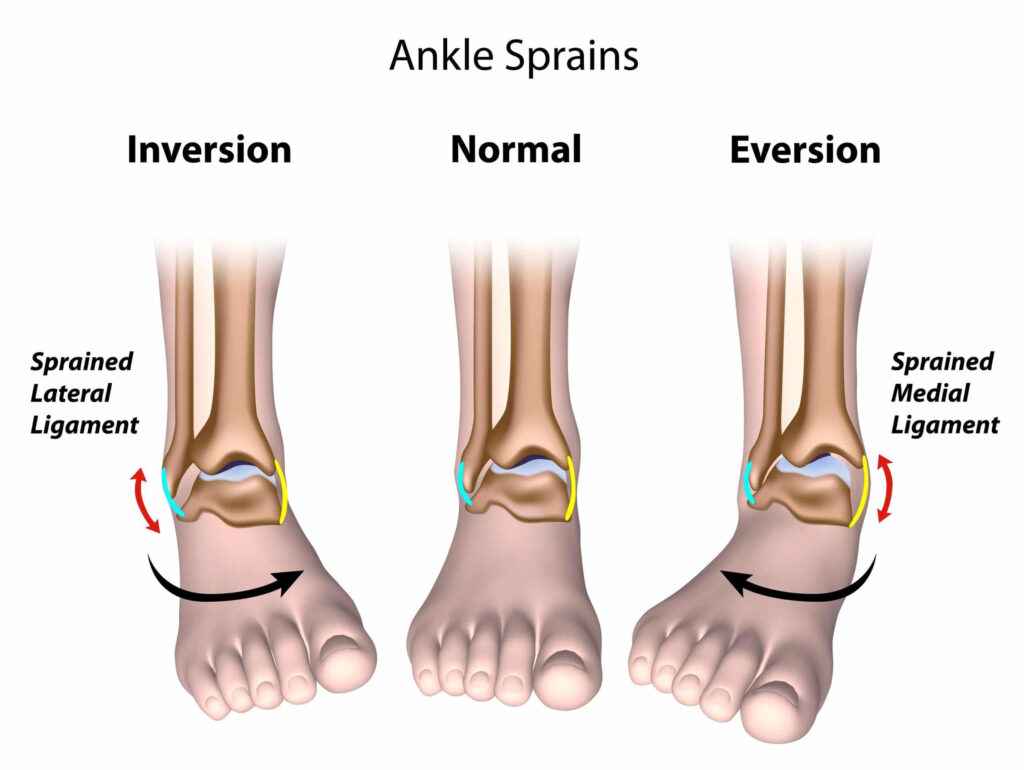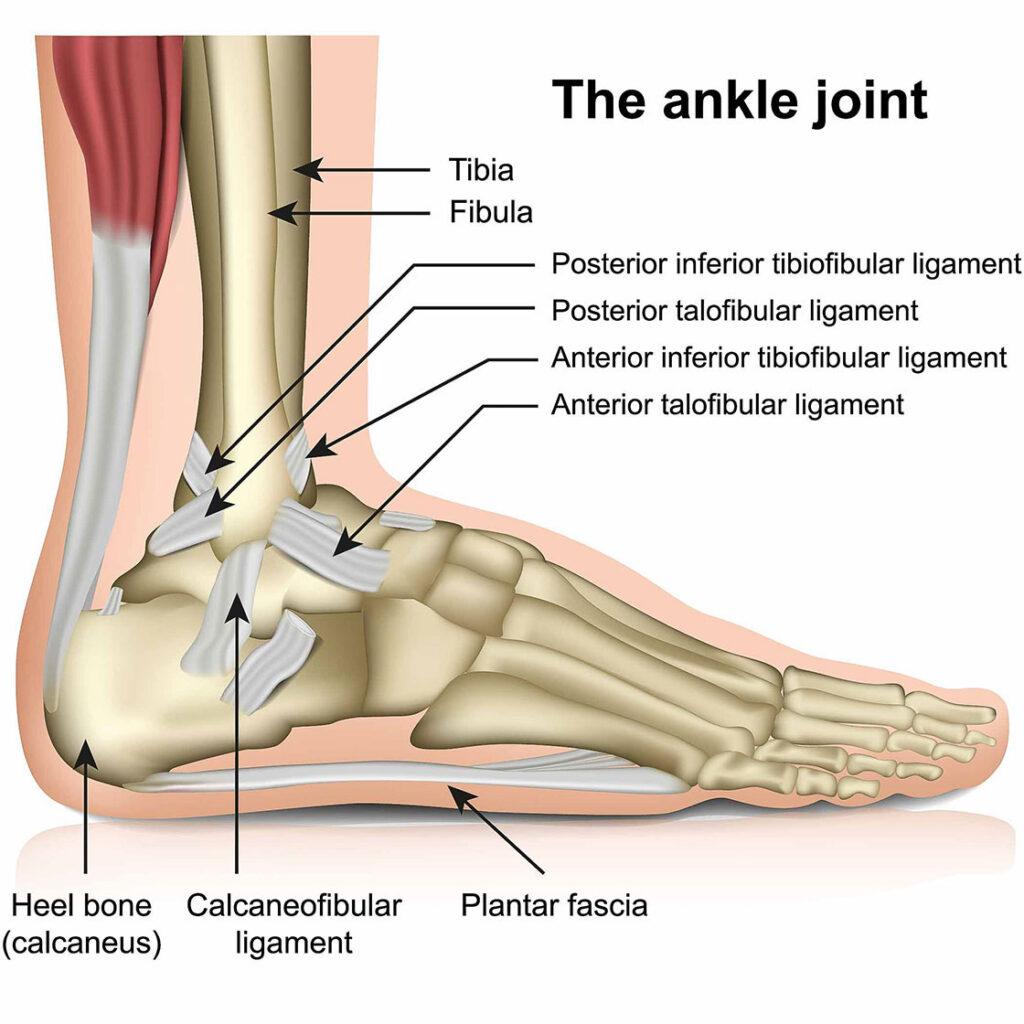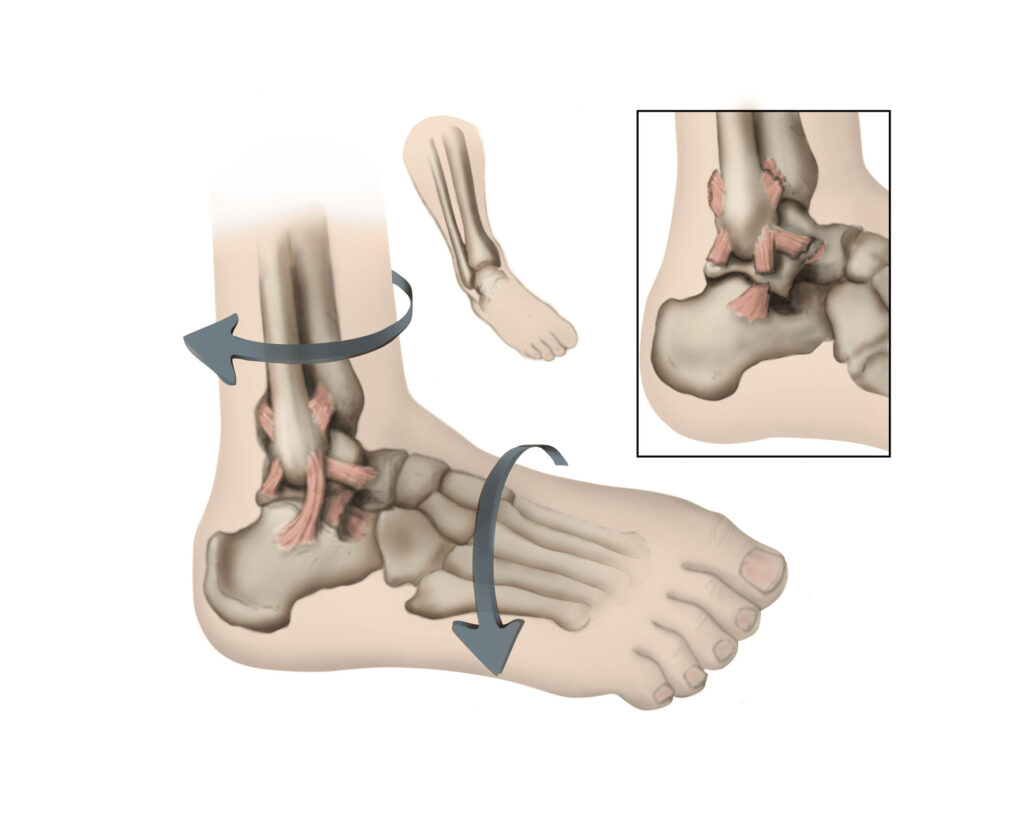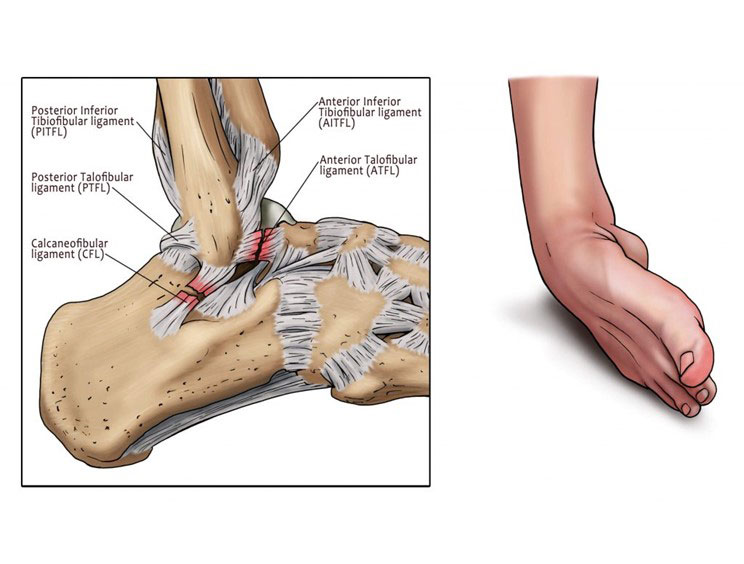Lateral Ankle Sprain
Lateral Ankle Sprain
If you have ever injured your ankle, you know that it can be quite painful. A lateral ankle sprain is one of the most common ankle injuries. It occurs when you roll your ankle outward and typically results in pain, swelling, and difficulties walking. Fortunately, most lateral ankle sprains heal on their own within a few weeks. Here are some tips to help speed up your recovery.

What is a lateral ankle sprain?
A lateral ankle sprain is a type of ankle injury that occurs when the anterior talofibular ligament on the outside of the ankle is stretched or torn. The most common cause of a lateral ankle sprain is rolling over on the ankle, which can damage the lateral ligaments. Other causes include landing awkwardly from a jump, being tackled in football, or stepping in a hole.
Symptoms of a lateral ankle sprain include pain, swelling, and bruising on the outside of the ankle. The ankle may also feel unstable and difficult to walk on.
Treatment typically involves icing the ankle, elevating it, and wearing a supportive brace or wrap. In some cases, crutches may be necessary. Surgery is rarely needed to treat posterior talofibular ligament sprains.
Severe ankle sprains can be painful and debilitating, but with proper treatment, most people make a full recovery. With time and rehabilitation, the injured ankle will regain its strength and stability.
However, some people may continue to have lingering pain and instability, which can lead to further injuries down the road. It is important to see a doctor if you think you have sprained your ankle so that you can get the proper treatment.
How do you know if you have a lateral ankle sprain?
The most common symptom of a lateral ankle sprain is pain on the outside of your ankle.
This is usually caused by overstretching or tearing the deltoid ligament that supports the ankle joint. Other symptoms can include:
– Swelling
– Tenderness
– Bruising
– Difficulty walking or bearing weight on the affected ankle
How is a lateral ankle sprain diagnosed?
If you suspect that you have a lateral ankle sprain, it is important to see a doctor or other healthcare provider for an accurate diagnosis.
They will likely ask about your symptoms and how the injury occurred. They may also conduct a physical examination of your ankle.
Imaging tests, such as an MRI, may also be ordered to rule out other potential causes of your symptoms, such as a fracture.
Treatment for a lateral ankle sprain
Treatment for a lateral ankle sprain usually begins with conservative measures, such as rest, ice, and elevation. You may also be advised to wear a boot or brace to help support the ankle and promote healing.
Physical therapy may also be recommended to help stretch and strengthen the muscles and ligaments around the ankle.
Surgery is usually only necessary if the ligaments are completely torn or the joint is unstable.
If you have a lateral ankle sprain, it is important to follow your doctor's instructions for treatment. This will help ensure a full and speedy recovery.

Prevention
There is no sure way to prevent a sports hernia. However, you can help reduce your risk by staying in good shape and using proper form when participating in sports or other activities. Core strengthening exercises also help in this problem. Wearing supportive equipment, such as a groin cup, may also help reduce your risk.
If you have any symptoms of a sports hernia, be sure to see your doctor. Early diagnosis and treatment is important to help prevent further damage to the muscles and tendons in your groin.
Causes of lateral ankle sprains
The causes of lateral ankle sprains can be broadly divided into two categories: acute and chronic.
Acute causes are typically related to a single event or trauma, while chronic causes are usually the result of repetitive stress or overuse.
Acute causes
The most common acute cause of lateral ankle sprain is an inversion injury, which occurs when the foot turns inward excessively, causing the ligaments on the outside of the ankle to stretch or tear.
Acute ankle sprains can happen when the foot lands awkwardly after a jump, for example, or when the ground is uneven and the foot rolls over on itself.
Chronic causes
Chronic lateral ankle sprains are usually caused by repetitive stress to the ligaments, tendons, and joints in the area.
Chronic ankle instability can happen from activities that put repeated strain on the ankle, such as running or playing tennis.
It can also occur in people with flat feet or high arches, who are more prone to instability in the sprained ankle joint.
Regardless of the cause, lateral ankle sprains can be quite painful and may lead to long-term instability in the joint if not treated properly.
If you suspect you have sprained your ankle, it is important to see a doctor or other medical professional for diagnosis and treatment.

Treatment for lateral ankle sprains
The treatment will vary depending on the severity of the injury.
For mild ankle sprains, the RICE method (rest, ice, compression, elevation) is often recommended.
More severe injuries may require immobilization or surgery. Physical therapy may also be recommended to help with the healing process.
If you have suffered a lateral ankle sprain, it is important to seek medical attention as soon as possible.
This will help ensure that you receive the appropriate treatment for your injury and can help prevent further complications.
immobilization or surgery may be needed for more severe injuries. RICE (rest, ice, compression, elevation) is often recommended for mild ankle sprains. Physical therapy may also help with healing.
If you have suffered a lateral ankle sprain, it is important to seek medical attention as soon as possible in order to receive the appropriate treatment for your injury and prevent any further complications.
Recovery time for a lateral ankle sprain
The recovery time can vary, depending on the severity of the injury. For a first-time or mild sprain, you might be able to return to activities within a few days. A more severe sprain could take weeks or even longer.
In most cases, you can expect some discomfort and swell around the site of the injury for some time after the initial injury.
There are a few things you can do to help speed up your recovery and reduce your risk of further injury.
1. Rest:
Avoid activity that puts stress on your ankle. This means no running, jumping, or other high-impact activities.
Taking a break will help your ankle heal and reduce your risk of re-injury.
2. Ice:
Applying ice to the injured area can help reduce swelling. Try to ice your ankle for 20 minutes at a time, several times a day.
3. Compression:
Wrapping your ankle with an elastic bandage can also help reduce swelling.
Be sure not to wrap it too tightly, as this could cause more swelling.
4. Elevation:
Keeping your ankle elevated above heart level can also help reduce swelling. Try to prop your ankle up on a pillow when you’re sitting or lying down.
Following these tips can help you recover from a lateral ankle sprain and get back to your normal activities as soon as possible.
However, if your pain is severe or you’re having trouble putting weight on your ankle, it’s important to see a doctor or other medical professional for further evaluation and treatment.

Prevention tips for avoiding lateral ankle sprains
There are several exercises you can do to help strengthen your ankle and reduce your risk of injury.
Exercises to strengthen your ankle and avoid injury
There are several exercises you can do to help strengthen your ankle and reduce your risk of injury.
1. Heel raises:
Stand with your feet hip-width apart and your weight evenly distributed. Slowly raise up onto your toes, then lower back down. Repeat 10-15 times.
2. Toe raises:
Start in the same position as for heel raises. This time, however, raise up onto your tiptoes, then lower back down. Repeat 10-15 times.
3. Ankle rolls:
Sit on the ground with your legs out in front of you and your feet flexed upward. Gently roll your ankles in a circular range of motion, first clockwise, then counterclockwise. Repeat 10-15 times in each direction.
4. Calf raises:
Stand with your feet hip-width apart and your weight evenly distributed. Slowly raise up onto your toes, then lower back down. Repeat 10-15 times.
5. Balance exercises:
Stand on one leg and raise the other leg off the ground. Hold for 30 seconds, then switch legs. Or, try standing on an unstable surface like a foam pad or Bosu ball to challenge your balance further.
Performing these exercises regularly can help prevent ankle injuries and keep you feeling strong and stable on your feet.
If you have any pain or discomfort while doing these exercises, stop and consult your doctor or physical therapist.

FAQs related to lateral ankle sprains
The risk factors for developing a lateral ankle sprain include:
– Previous ankle injury
– Muscle fatigue
– Poor balance
– Wearing high heels
– Walking or running on uneven surfaces
-participating in sports that involve cutting or sudden changes in direction
There are several things you can do to help prevent a lateral ankle sprain, including:
– Warming up and stretching before participating in sports or other activities
– Wearing appropriate shoes that provide support and stability
– Avoiding walking or running on uneven surfaces
– practicing balance exercises
The treatment for a lateral ankle sprain will depend on the severity of the injury. For a mild sprain, rest, ice, and over-the-counter pain medication may be all that is needed.
For a more severe sprain, you may need to wear a splint or boot and use crutches to keep weight off your ankle. Physical therapy may also be recommended to help stretch and strengthen the muscles around your ankle.
In some cases, surgery may be necessary to repair torn ligaments.
The healing time for a lateral ankle sprain will vary depending on the severity of the injury. For a mild sprain, you may be able to return to activities within a few weeks.
For a more severe sprain, it may take several months to fully recover. It is important to follow your doctor’s instructions and not return to activity until your ankle is healed to help prevent further injury.
While most people recover from a lateral ankle sprain without any long-term effects, some may experience ongoing pain, weakness, or instability in the ankle. In rare cases, surgery may be necessary to correct these problems.
Are you suffering from a Lateral Ankle Sprain?
We’ve helped hundreds of people at all walks in life
get back to performing their best painfree!
3 Ways to Level Up Your Rehab and Injury Prevention With Us





